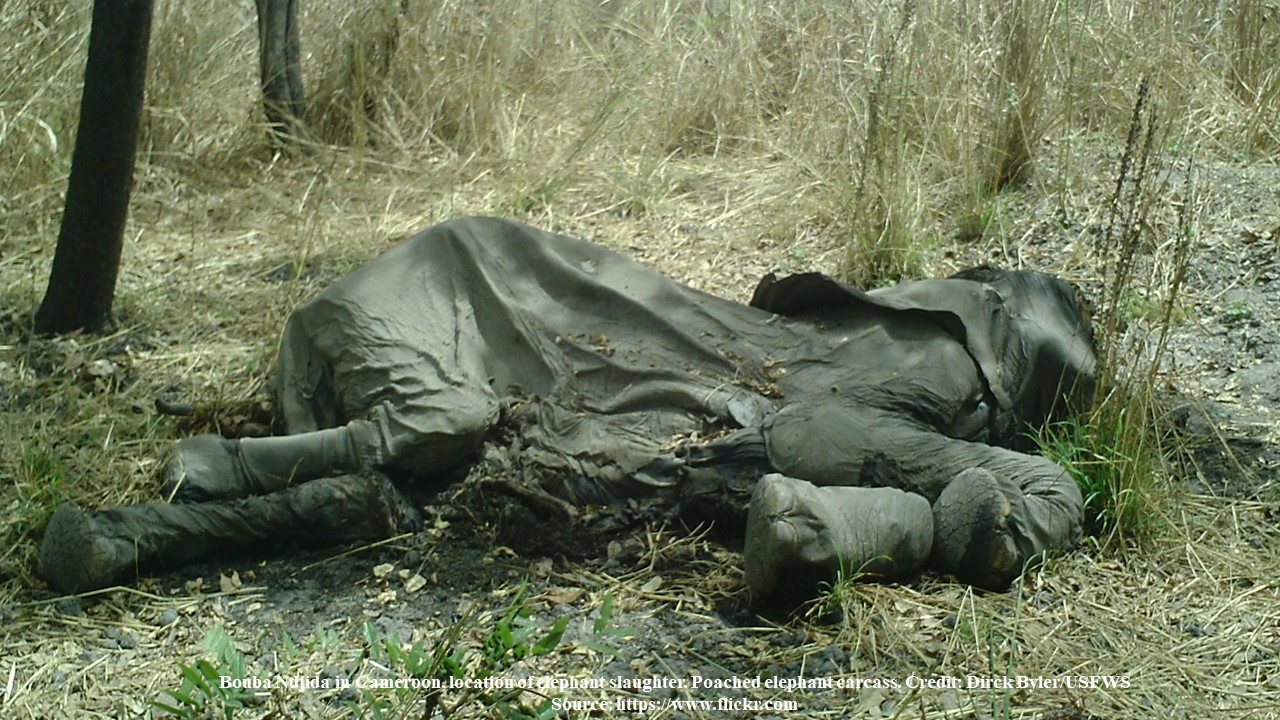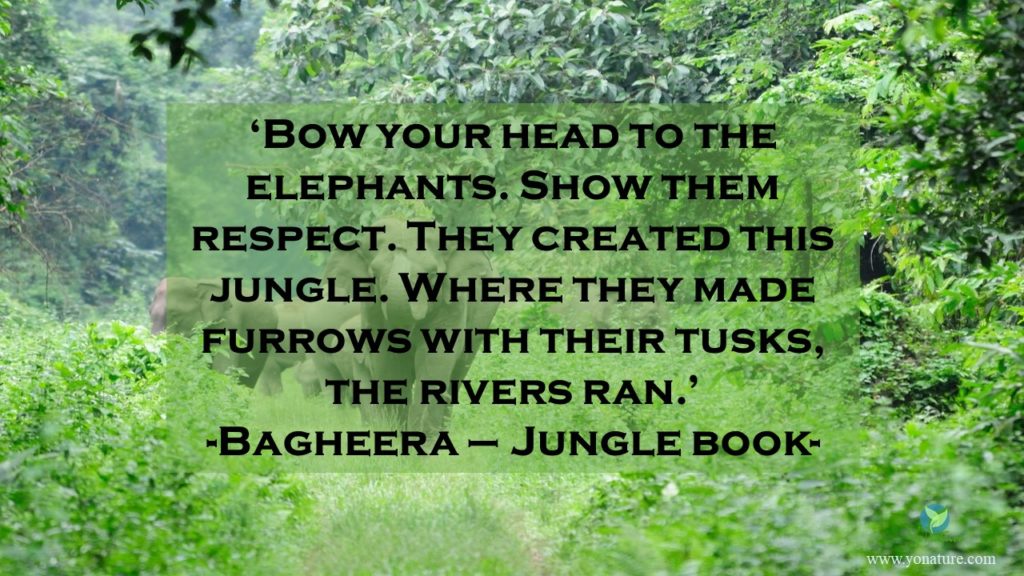Are elephants becoming extinct in the wild?

The largest land mammals could very soon be wiped off the Earth. One word. Poaching. Illegal trade in ivory threatens these majestic animals close to extinction. The way things are now going, it is estimated that the African elephants may disappear by the end of the next decade [1]. While they used to stroll serenely over vast land areas in millions in the past, today, the numbers are plummeting dangerously.
Elephant numbers in the wild
Based on their locations, elephants are grouped into African elephants and Asian elephants. African elephants travel over 37 countries in Africa and can be further divided into forest elephants (Loxodonta cyclotis) and savanna elephants (Loxodonta Africana). Elephants in Asia (Elephas maximus) move over 13 countries of the continent [ 1]. Both types of elephants require large spaces to move, as well as, search for the required amount of food to sustain themselves.
There has been a dramatic decline in the numbers of African elephants since 1979 by up to 50%. It is estimated that only 415,000 elephants are now left in the wild [2]. Figures for the Asian elephants are alarming as well: only 40,000 animals are left in the wild. With the lucrative crave for ivory recently, numbers may not be that precise. Rangers in national parks reveal that, even though they know almost every elephant they protect, they prefer not to shout it loud. Because this will inevitably attract poachers.
Why are elephants important in nature?

Elephants are keystone species in the environment. Their role in shaping the continental environment and making room for smaller animals to survive cannot be overlooked.
- The huge pachyderms create pathways in forests when they trudge, trim tree heights and graze savanna bushes. This helps to create open spaces for other organisms to move.
- With the help of their tusks, they can dig holes in the ground to get water when the land is dry. Other animals also benefit from the water source.
- As elephants create water points along the way, it aids in preparing the land for water courses like stream.
- Elephants disperse seeds in their dung. They eat at one point and then egest the remains in other places. Seeds can grow and develop into trees away from their mother plants.
- Also, dungs are a food source for microorganisms on the land and amphibians in water bodies. Insects breed on them, further attracting birds and rodents.
- The dung also enriches the soil causing seeds to grow properly.
Why are elephants threatened?
- In some parts of Africa and Asia, some villages are found in the middle of forest areas where elephants live. As a normal way of life, the tribes hunt elephants and eat their meat. The villagers only kill what they need to survive. Poaching elephants for their meat have alarmed the authorities in both Africa and Asia. Sex organs of elephants are believed to increase sexual libido in men in traditional medicine [3]. In Africa, the price of elephant meat has soared: US $ 5,000 for an adult male [4]. Considered a delicacy, hunting elephants encourages poachers.
- Deforestation – Forests are cut down aggressively to make land for agriculture as well as houses. The animals have to travel more to look for food.
- Habitat loss – In the name of development, the animals lose their forests and so are easily attacked by predators or killed by humans.
- Instill fear and anger in human populations – Once farmers settle on previously forested land, they shoot and kill elephants that approach their farms. Sometimes, out of fear of the big creatures, sometimes out of anger when the latter trample on and eat their crops.
- Culling – Elephants can do considerable damage to human populations when they are in big herds. In order to regulate their numbers, they have also been culled in the past.
The real issue: Poaching
The major issue that now threatens our elephants the most is poaching. The mammals have something that humans crave for: ivory tusks.
The ivory just an extension of the teeth; it is made up of dentine (tissue that make up teeth) and covered in enamel. Elephants use their tusks in their daily lives as in digging holes, breaking branches and for defense.
This same ivory costs roughly US $ 700/kg on the market, while sculptures can be in millions. Also called ‘white gold’, ivory is coveted in arts and crafts because:
- of its rarity,
- it’s soft sheen,
- the rich creamy color,
- it’s smooth texture and sheen.
China: the biggest importer of ivory
Elephants’ parts have always been used in traditional medicine in Asia just like plants and other animals. However, the situation has now completely capsized with the rise of Chinese traders on the market. Countries like Japan and Hong Kong used to import ivory before it was banned, but, the economic boom in China has completely changed the game. Ivory crafts reflect social status: only the rich can afford them. With an upgraded lifestyle, the Chinese are buying ivory chopsticks, candle holders, vases like crazy. Obviously, since there is a high demand for ivory on the market, importers and dealers in the surrounding countries of Asia are breaking all the rules to get ivory on the black market.
African elephants are the most threatened
Only a few male Asian elephants possess tusks; on the other hand, all African elephants, male and female, have them. In search of this white gold, poachers are attacking African elephants daily. It is estimated that around 100 African elephants are poached per day [1]; one, for the ivory; second, for some meat if they can get it quickly. The IUCN now lists elephants as threatened animals. Nevertheless, despite all the attacks, national and international agencies are monitoring the situation closely; but the situation is much more complicated than surveillance.
Government officials are involved in illegal trade
It has been reported that the illegal ivory trade is made possible in African countries with the help of government officials. Staff, in high ranked places, help in smuggling the ivory. People involved in this illegal trade are covered and backed up by friends up the ladder. In this way, the exchange runs smoothly and alleged criminals get away. Evidently, there are no concrete proofs to imply the politicians into this; but, when it comes to easy money, corrupted minds have their way. Ironically, poachers are paid pennies to kill elephants while risking their lives; dealers, on the other hand, re-sell the ivory at exorbitant prices on the black market.
How to stop elephant poaching?
Ivory has always formed part of the Chinese culture. They believe that Buddha placed elephants in nature and when the animals die, they are happy to be made into trinkets to rest in the Chinese homes. Others believe that ivory is a sign of prosperity and bring good luck to them. As far as culture roots go, there will always be a demand for ivory tusks.
There are no shortcut solutions to annihilate this demand, which would, after all, break all the poaching and importing bridges. The appropriate use of technology to trap the evildoers may help eventually, but a corrupted society may not stop the trade. Education and knowledge of the current situation will increase awareness on the subject in the meantime.
Adopt an elephant!
Poaching leaves many young elephants orphans. When the adults are killed, the children wander around aimlessly at the mercy of predators and hunters. You can help fund elephant protection missions by sponsoring campaigns. Adopt an elephant and invest in saving our wildlife!
What you get: private blog videos, certificate of adoption, species card, plush, gift bag, gift box etc., depending on your adoption kit. Your money will go into nurturing a young elephant.
Click on the links to get started now!
- World wildlife fund
- Defenders of wildlife
- Elephant conservation center
- The David Sheldrick Wildlife Trust
- David Shepherd Wildlife Foundation
References:
- World Elephant Day. Why care? Why World Elephant Day? [Online]. Available at http://worldelephantday.org/about/elephants [Accessed 29/01/2019]
- Worldwide Fund for Nature, WWF. Elephants. [Online]. Available at http://wwf.panda.org/knowledge_hub/endangered_species/elephants/ [Accessed 29/01/2019]
- Doksone, T. (2012). New taste for Thai elephant meat. Phys.org. [Online]. Available at https://phys.org/news/2012-01-thai-elephant-meat.html [Accessed 29/01/2019]
- IUCN. (2012). Sale of elephant meat increases threat to elephants in Central Africa. [Online]. Available at https://www.iucn.org/content/sale-elephant-meat-increases-threat-elephants-central-africa [Accessed 29/01/2019]

Pingback: Negative impacts of tourism on the environment - Yo Nature
Pingback: Biodiversity (Flora and Fauna) of Mauritius - Yo Nature
Pingback: Monkey Trade in Mauritius: Controversies and Benefits - Yo Nature
Pingback: The negative impacts of humans on the environment - Yo Nature
Pingback: 5 reasons why ecotourism is better than traditional tourism - Yo Nature
Pingback: Poaching – the cruelty driven business - Yo Nature